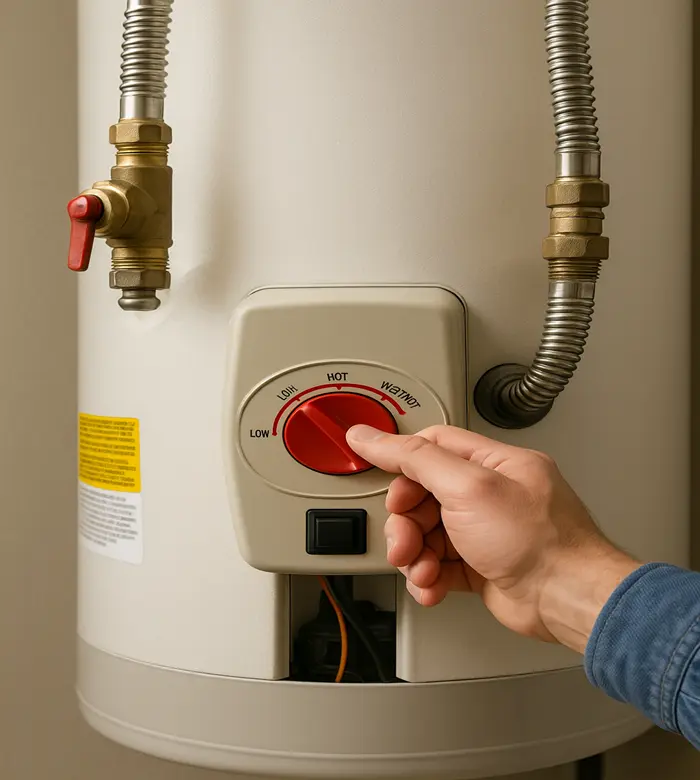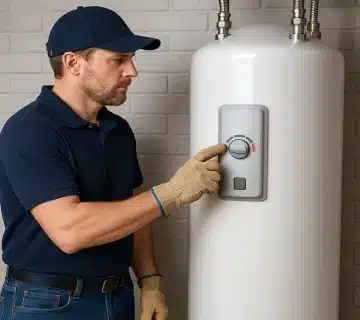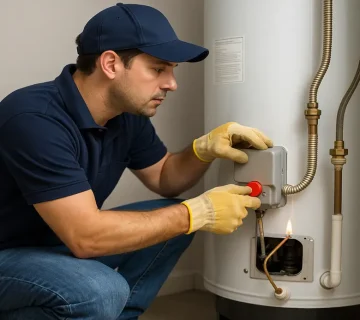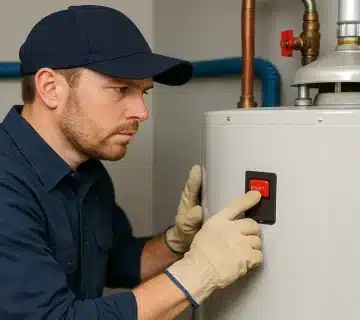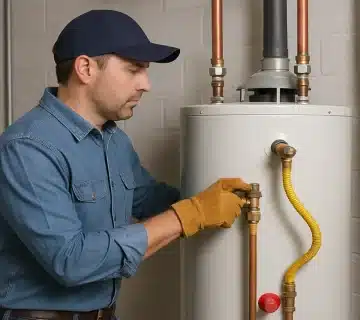Your water heater runs quietly in the background, providing comfort every day. But few homeowners stop to think about the temperature setting — and it matters more than you realize. Choosing the best temperature setting for water heater affects your safety, monthly energy bills, and the lifespan of your unit.
In this article, we’ll break down the best temperature setting for water heater so you can make the right choice for your home.
Why Water Heater Temperature Matters
The thermostat setting on your water heater directly impacts:
- Safety: Too high, and the risk of scalding burns increases.
- Energy efficiency: Each 10°F reduction saves roughly 3–5% on water heating costs.
- Appliance lifespan: Lower temperatures reduce mineral buildup and stress on components.
- Hygiene: Too low, and harmful bacteria like Legionella may thrive.
By understanding these factors, you’ll be better equipped to select the best temperature setting for water heater in your home.
The Recommended Temperature
According to the U.S. Department of Energy (DOE), the ideal setting for most households is 120°F (49°C). This strikes a balance between safety, efficiency, and performance.
- For families with children or elderly: 120°F is strongly recommended to reduce scald risks.
- For households with immune-compromised members: Some experts suggest slightly higher (130°F) to ensure bacteria control.
- For dishwashers without built-in heaters: 130–140°F may be necessary for proper cleaning.
How to Check and Adjust Your Water Heater
- Turn off power or gas supply to the heater for safety.
- Locate the thermostat dial — on electric units, it’s behind access panels; on gas units, it’s usually a knob at the bottom.
- Check your current setting and mark it before making changes.
- Adjust gradually — move the dial 5–10°F at a time.
- Test with a thermometer after an hour to confirm the actual water temperature at a faucet.
This process ensures you find the best temperature setting for water heater without major risks.
5 Proven Safe Rules for Setting Your Water Heater
- Stick to 120°F for most households to stay safe and efficient.
- Never exceed 140°F unless required for appliances, as burns can occur in seconds.
- Use higher settings cautiously if you need bacteria control — and add anti-scald devices.
- Test regularly with a thermometer instead of relying only on the dial.
- Insulate pipes and tank to maintain efficiency at lower settings.
Mistakes to Avoid
- Setting the thermostat too high “just in case.”
- Forgetting to recheck the temperature after adjustments.
- Ignoring changes in water temperature that signal thermostat issues.
- Not considering vulnerable family members when choosing settings.
Another mistake is leaving your water heater unchecked for years. Dust, sediment buildup, and worn-out thermostats can affect accuracy, making it harder to maintain the best temperature setting for water heater performance.
FAQs: Best Temperature Setting for Water Heater
Q: Is 120°F hot enough for showers?
Yes. Most people find it comfortable, and it prevents scalds.
Q: Will lowering the temperature really save money?
Yes. Each small reduction cuts energy use, adding up over a year.
Q: What temperature kills bacteria like Legionella?
130–140°F is ideal for disinfection, but it must be managed carefully.
Final Thoughts
Finding the best temperature setting for water heater doesn’t have to be complicated. For most households, 120°F delivers the right balance of safety, efficiency, and comfort. Adjust slightly if your situation requires it, but always prioritize protection against burns and unnecessary energy waste.
By checking your setting, testing regularly, and following safe rules, you’ll enjoy reliable hot water and lower bills without compromising safety.
Regular maintenance, flushing the tank, and checking your thermostat at least once a year ensures your heater maintains the ideal temperature without wasting energy. This simple habit can also extend the life of your unit.

